. . . Belatedly!
Sometimes a delay happens for very good reasons.
Of course, I may just be trying to reassure the OCD facet of my personality, the part who has a very hard time missing a deadline–even a self-determined tree-planting deadline.
My “New Plan A” Choice
On Friday–Arbor Day 2019–when one of my daughters asked me what tree I had decided to plant, I told her an American Basswood (aka the Bee-Tree). Of the three trees in running: Swamp White Oak, the Tulip-Tree, and the Basswood, I felt this one had the best chance to survive in my yard and the most to offer, given:
- There is not enough room in my already full-canopied yard for the Swamp White Oak.
- Tim Travis, owner of Goldner-Walsh Nursery warned that Tulip-Trees tend to be weak-wooded and could split in an ice storm.
- Although Tim Travis had also said he wasn’t a big fan of the Basswood because of how dense it was–and I had read an interesting description of how the thick heavy canopy looked from a bird’s view–I figured it was the best of the three and its benefit to the bees would make up for any downside that came with its dense crown.
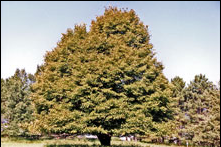
Photo credit: Minnesota Seasons
http://minnesotaseasons.com/Plants/American_basswood.html
h
Unsettled
Having finally made my decision, I was surprised to feel unsettled whenever I thought about it that evening while singing in the Troy Community Chorus’s spring concert “Sweet Dreams.” Nor did I open either of the books I’d lugged to our cottage to read more about the American Basswood while on Pelee Island Saturday and Sunday, where we’d fled attempting to get away from construction challenges that have cropped up in what was to be the end of our addition-building project.
Perhaps I should have recognized what this “unsettled” feeling meant about my decision at the time I was feeling it.
Post-Decision Messages Arrive
Saturday morning, Jason, my son-in-law, in Durham, NC texted me this photo accompanying the text below it:

At our concert’s afterglow Friday evening, Fred G. had asked me if I’d made my decision. A fair question. He’d read my Thursday evening post and Arbor Day was approaching midnight. I told him my decision was the Basswood to benefit the bees.
Saturday evening, Fred shot me an e-mail, which I was able to access on my phone on Pelee during a reprieve from my typical no-service status on the island. In his e-mail, Fred tried to convince me I should plant a Tulip-Tree to replace his dying one, which is planted just one street north of us. In support of this idea, he quoted some information about Tulip-Trees, from Owlcation: “The amount of nectar produced can be around a tablespoon per flower and it is why the tree is popular with beekeepers. The nectar is also popular because it also contributes to the rich and strong flavor of poplar honey.”
Should I be reconsidering the Tulip-tree? There had also been that dried Tulip-tree leaf–the only dried leaf–stuck in the tree guide my mom gave me a few weeks ago. Maybe that was why I felt unsettled with my decision; I’d picked the wrong one of the three native trees.
What Is the Space Calling For?
My delay also allowed some additional information to reach me in the form of an e-mail message with the subject line “Trees . . .” from Bronwen Gates, scientist, herbalist, poet and intuitive of Ann Arbor. When I got back on-the-grid yesterday, I read the message she’d sent Sunday afternoon:
“Forgive this late contribution …
My first question, if you’re planting in your yard (I liked the Ginkgo idea at the Senior Center), would be “What is the space calling for?” Do you have plenty of mature trees with almost complete canopy cover? Is there room for another Big Tree?
What about some of the wonderful native understory trees like Shadbush (Amelanchier), so welcome as the earliest of all the rose family trees in bloom and with “delish” fruits in June. Or our native Flowering Dogwood (Cornus florida), that also delights as it blooms while the big trees are just beginning to leaf. Such a symphony of color, texture, and spatial delight.
You mention Swamp White Oak as a possibility. Is your area seasonally inundated? The range of many trees that grow in swamps get their competitive advantage from tolerating /requiring that they are seasonally inundated. We don’t always realize this if we don’t visit a place at all seasons…
Hope you are thrilled with your choice…
Spring blessings,
Bronwen
With respect to the Swamp White Oak: Despite reports of flooded basements in the neighborhood every spring, sometimes including ours, with the Red Run underground, my front yard, a part of its former floodplain, does not get inundated with water or with anything else every year. Except more English ivy.
Three Factors to Consider
- Thrilled with my choice? Well, no. Unsettled isn’t thrilled.
- My yard was already under a pretty full canopy before moved in over a dozen years ago as you can see below. Maybe I shouldn’t be adding to the overstory, but thinking in terms of the understory instead.
- After three decades of friendship with this Wise Woman, I do know to consider her suggestions and heed her advice.
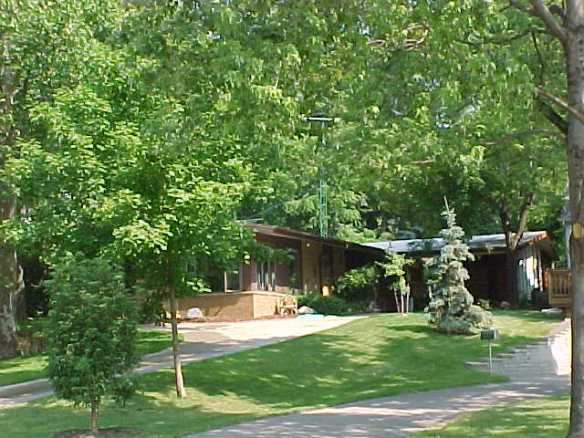
A Morning of Understory Research
I began this morning by moving a bookshelf of 15 tree guidebooks from our new bedroom back to my study. (One of our construction challenges had caused them to be removed from my study last week. Speaking of inundation …)
Then I spent a Pomodoro’s worth of time on each of Bronwen’s suggestions.
The “Shadbush”
This native tree, Amelanchier arborea, is a member of the Rose family, also known commonly as the:
- Shadberry, Shadblow, or Shadwood–So called because the tree’s flowering signals when shad–a herring-like fish that spends much of its life in the sea–typically runs upstream in rivers to spawn.
- Common Serviceberry, Sarvisberry, or Sarvis–Perhaps most commonly known by one of this trio of names. “Service” (or “sarvis,” the Appalachian pronunciation of “service”) because during the time of the United States’ northern settlement, flowers on this earliest-blooming tree signaled the time of the year when funerals, marriages, and baptisms could once again occur after winter because roads were once again passable for ministers/priests who provided these services. Another source suggested the blossoms more specifically signaled the time when the ground was thawed enough for digging graves and subsequently, the funeral services.
- Juneberry–Because the edible and delicious red to purple small berries appear in June. Humans have to compete with birds to consume these sweet treats, which, while more closely related to apples, reportedly, taste most like blueberries and are successfully used in baked goods, especially pies. They can also be dried like raisins.
- Other names for the species include: sugarplum, wild-plum, saskatoon, chuckley pear (although some of these may relate to some of the 15 other varieties of serviceberry trees or bushes, not the Common Serviceberry.)

Photo credit: https://readytogrowtrees.com/products/serviceberry-shadblow
I have mentioned how much I appreciate things called by more than one name. I had already decided that if it were a Shadbush I planted, it would from ever henceforth be referred to as “The Juneberry.”
The Downsides of the Juneberry
However, as I read more, I did notice two downsides to the native understory choice of the Juneberry tree:
- Deer browse on twigs of this tree. Since the disruptive development of three of the four lots in the middle of our block, I’ve not seen members of our “Vinsetta Herd” much, but I suspect they’re just biding their time ’til the commotion quiets down. I provide them candy by way of my hostas, but I’d feel much differently about them nibbling on a tree.
- In one reference, I noticed the trees commonly live only 10 – 20 years (in which case, I may well outlive it, given my family genes) while other sources agreed that this 20-to-50-foot tree is relatively short-lived, rarely living longer than 50 years. I suspect my daughters and grandchildren might all outlive a specimen of this species.
Redbud Misread
For no reason I can imagine, when I first had read Bronwen’s e-mail, I misread her two suggestions as being: a Shadbush and a Redbud.
I do love redbud trees–Lisa E. and Susan H-B had both suggested that species. But, I already have one. It’s the Forest Pansy Redbud that I had planted in our front yard in 2012. This is the tree that split in half last August while it was heavily-leafed and we were experiencing a gusty day shortly after the large evergreen trees and shrubs–serving the purpose of a natural windbreak, I suspect–were removed from the lots being developed west of my house.
Visceral Delight
When I reread Bronwen’s e-mail and realized she had, in fact, recommended an Eastern flowering dogwood (Cornus florida), I felt zapped by a zing of joy. A dogwood!

Photo credit: https://www.amazon.com/1-White-Flowering-Dogwood-cornus-florida/dp/B01D12HHFO
A Brief History of Dogwood and Me
While I’ve never been intimately connected with land on which a dogwood grew at any time in my life, I remember asking my mom to identify a flowering tree I’d fallen in love with in the spring of 1979. This was the spring we closed on and moved into our first house, a small two-bedroom Tudor, which had a tiny foyer with a floor of Pewabic tile, located on Lichfield Road in Detroit’s Green Acres neighborhood. Five weeks later, we were married.
The dogwood was maybe half a block north of our house, on the same side of the street. It bloomed ecstatically that year despite an ice storm that began on April 8th, the last day of the weekend we moved in, one of the 10 worst storms in Detroit history that left us without power for 6 days. I wonder if that beautiful tree still grows there.
For the past four decades, every time I see a dogwood in flower, I’m taken back to the spring walks we took after the ice melted, imagining our future together during those deliriously-happy early weeks of home ownership and marriage. The dogwood’s blossoms had faded by the end of June.

Photo credit: Liz West
https://www.flickr.com/photos/calliope/34612579626
My Post-Arbor Day 2019 Decision
Our 40th wedding anniversary is this year in the month of May. Perhaps, this would be a good time to plant a dogwood to bloom every year in our yard from this time forth. Yes?

Photo credit: Lacey Smith from Pixabay


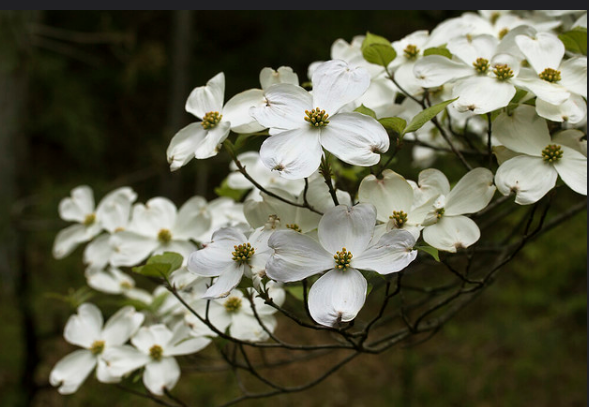

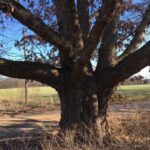

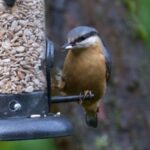
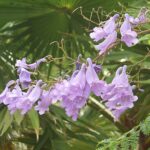

Yes! I’ve always loved dogwoods!
Meagan reminded me that we gave the two of you a dogwood for an anniversary present last year–which I’d completely, and bizarrely, forgotten about–that needs to get purchased and planted. Maybe in NC, given that you’re already experiencing what we’d call summer weather, fall would be better? We’ll talk …
Love the Dogwood tree! We had one in our yard when I was in high school. It was such a beautiful sight each spring. My mother shared with me a legend about the Dogwood. She said the cross that Jesus was hung on had been a Dogwood and that since that time the Dogwood’s trunk had never grown large enough to be used in that way and that it now spent its energy on producing beautiful flowers. The story made the tree and its blooms even more endearing.
Now I’m convinced that you should plant a shadbush, because it could make you the sugarplum fairy. https://www.youtube.com/watch?v=zV1qLYukTH8
Ha-ha, it will take more than me becoming a steward of a shadbush to turn me into the sugarplum fairy. Apparently, you weren’t present in my tenth-grade gym class to see my modern dance, performed with Barb Lelli and Sherry Urban and set to “California Dreaming,” or you’d not considered such a connection!